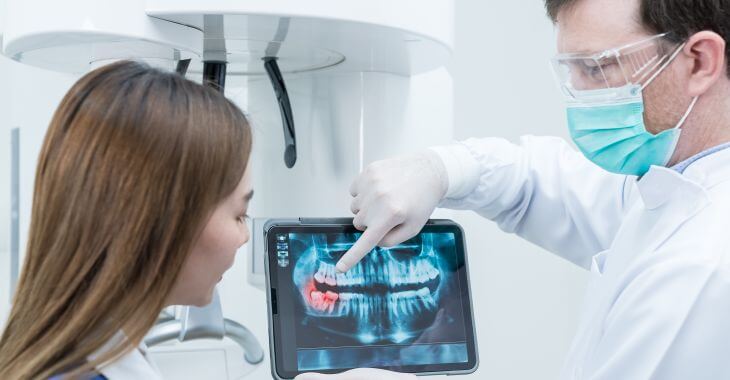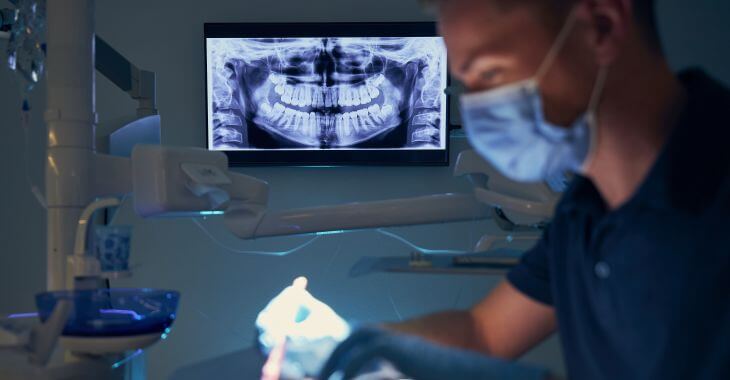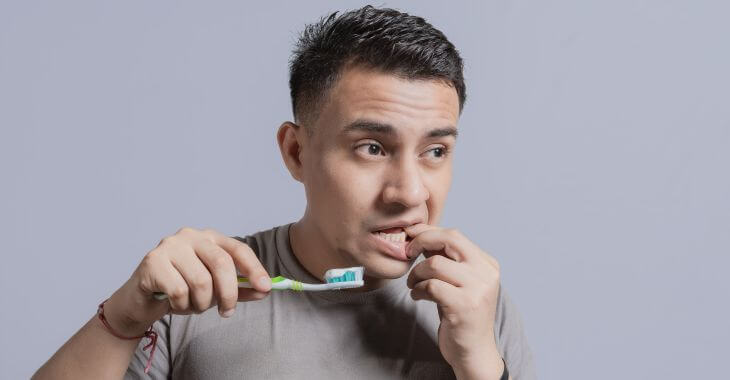Do I Need a Bone Graft After a Tooth Extraction?

Every tooth has its roots anchored in the jawbone. When a tooth is extracted, an empty space is left in the bone and a gap in your smile. If you are having a tooth removed, you may wonder if you will need a bone after a tooth extraction. The answer depends on a few different factors.
What Is a Dental Bone Graft?
Bone grafts are used in dental treatments to add density to the jawbone. Bone loss in the jaw is common – it can be caused by periodontal disease or a result of lost teeth. A dental bone graft uses a portion of bone harvested from another area on the body to stimulate bone growth in the jawbone.
Bone graft after a tooth extraction may be recommended for a few reasons. First, if there is bone loss in the jawbone, a graft can increase the density. This is important for the jawbone strength, but it is usually performed if the patient would like to replace the lost tooth with a dental implant.
Is a Bone Graft Necessary After Tooth Extraction?
Not everyone needs a bone graft after a tooth extraction. For example, many people have their wisdom teeth removed and most will not need a bone graft. Since bone grafts are typically used to increase bone to support prosthetic teeth, it is only needed when a patient has poor bone density.
A bone graft often requires a secondary procedure to harvest the bone material. Unless the bone graft is needed for a future dental implant or other oral health concerns, some patients may opt not to have this surgery performed. It is recommended to promote bone growth, but it may not be absolutely necessary.
When Is a Dental Bone Graft Performed?
If you need a bone graft after a tooth extraction, it may be performed at the same time as your tooth removal. This is the most convenient way to add a bone graft, since there is easy access to the empty socket. Once the tooth is removed, a small amount of bone grafting material can be added to the socket.
Bone graft material can be one of a variety of substances. When possible, many dentists prefer a piece of bone harvested from the patient – this ensures that the graft will be accepted. There are also other options such as synthetic bone or bone grafting powder.
If the bone graft is performed at the same time as the tooth extraction, it is less invasive for the patient. The tooth is removed, and the bone graft is placed, then the gum tissue is closed with sutures to allow it to heal. If it is performed after tooth loss, oral surgery is needed to access the jawbone to place the graft.
Tooth Extraction and Bone Graft Recovery
When you have a tooth extraction with a bone graft procedure, the healing process is similar to a singular tooth extraction. Your tooth extraction and bone graft recovery should only require a few days – most people are able to perform normal activities quickly after their procedure.
The gingiva, or gum tissue, is stitched to cover and hold the bone graft in place. The area should be kept clean, and most dentists will suggest using saltwater rinses a few times a day to prevent infection. It is recommended to avoid chewing on that side of the mouth for a few days to avoid irritating the site.
The dental bone graft takes time to fuse to the bone. Most bone grafts will require about 4-6 months to heal and promote bone growth before a dental implant can be placed. Each patient may heal differently, and it may depend on the bone density before the bone graft was added.
Benefits of a Bone Graft After a Tooth Extraction
When a tooth is removed for any reason, it can result in lost bone in the jaw. This can affect the bone density for the remaining teeth, and it can also impact the appearance of the facial bone structure. Adding a bone graft after a tooth extraction can stimulate bone growth to avoid unnecessary bone loss.

If you are planning to replace the lost tooth with a dental implant, a bone graft is usually recommended to enhance the support for the future implant. Since the procedure can be completed during the tooth extraction surgery, the recovery is about the same as after a typical tooth extraction.
While not everyone needs a bone graft after a tooth extraction, it can be beneficial for many reasons. If you are having a tooth removed, talk to your dentist about whether a bone graft should be considered after your tooth is removed. It may be a wise choice, especially if you need a dental implant in the future.
The information provided on this website, including text, graphics, images, and other materials, is intended solely for informational purposes and should not be used as a substitute for professional medical advice, diagnosis, or treatment.




)